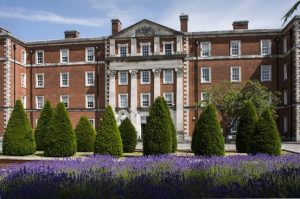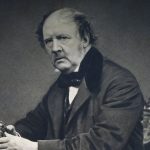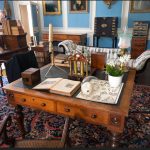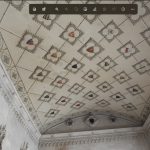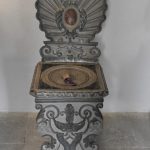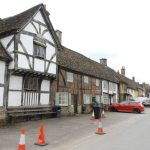Click image to see enlarged version

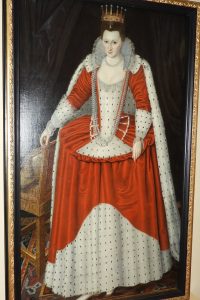



Once again, the AHA Group met up on Friday 25th March for a day visit to the above venue. Sadly, for the organisers it was disappointing as the turnout was poor, but in response to this, I would say you missed out on a glorious day in more ways than one. We had a very smooth run down to Montacute, in perfect spring sunshine and the countryside was so inviting.
We met up at the café courtyard for coffee and to finalise our plan for the day, accommodating everyone’s needs. We started off with a self-lead tour of the house, but there was enough trained staff on hand to answer any of our questions. We broke off from the inside of the house to join a guide outside, who walked us around the property to explain the architecture and the various changes that has taken place over the years.
This guide was very knowledgeable, amusing and kept it interesting*. At this juncture, it was a good time to take lunch, again basking in the warm spring sun in the courtyard.
*Originally, advised no guide would be available.
We then returned to complete our interior tour of the house. The house was built c. 1598 by Sir Edward Phelips a wealthy lawyer and an influential member of Elizabeth I’s Parliament. As the Speaker of the House of Commons, he was involved in the trial of Guy Fawkes and the Gunpowder Plotters.
The house was built of the same golden Ham Stones as nearby Tintinhull House, it remained in the Phelips family until 1911 and became the property of the National Trust in 1931. The Tudor west front went under a major change in 1786, as at this time to get around the house, you had to go from room to room. A local property known as Clifton Maybank House was being demolished and Phelips purchased the material and it removed stone by stone and was transported across to Montacute. The main entrance was then changed from long East drive to the West, making a shorter drive coming direct from the village.
Montacute House has at 172ft the longest Gallery in the UK, which now contains a very interesting exhibition by the National Portrait Gallery. The house has one unique facility, which is a plumbed-in bath, installed in the 1920, housed in a cupboard! The house has a wealth of interesting artwork, mainly portraits of the associated family of the Phelips and their association with Royalty.
Around 4pm it was agreed that we all were beginning to feel a little weary both physically and mentally in a nice way, that we would make our way back home, but to go a scenic route through the delightful countryside. In fact, we all believed that we had touched on an interesting new territory. As usual, we had planned to have dinner somewhere on our homeward route. However, not knowing the region well, we opted to keep it fairly local to us all and dined at the Three Cups, Stockbridge. We had an excellent meal and returned to Mike and Pam’s for coffee, thank you both for your hospitality.
A great day had by all, enhanced by the marvellous weather!
Rosemary Crumplin-Clark – AHA Co-ordinator
Please note:- April 22nd visit is to Laycock Abbey, Church & more !!!!
fox
